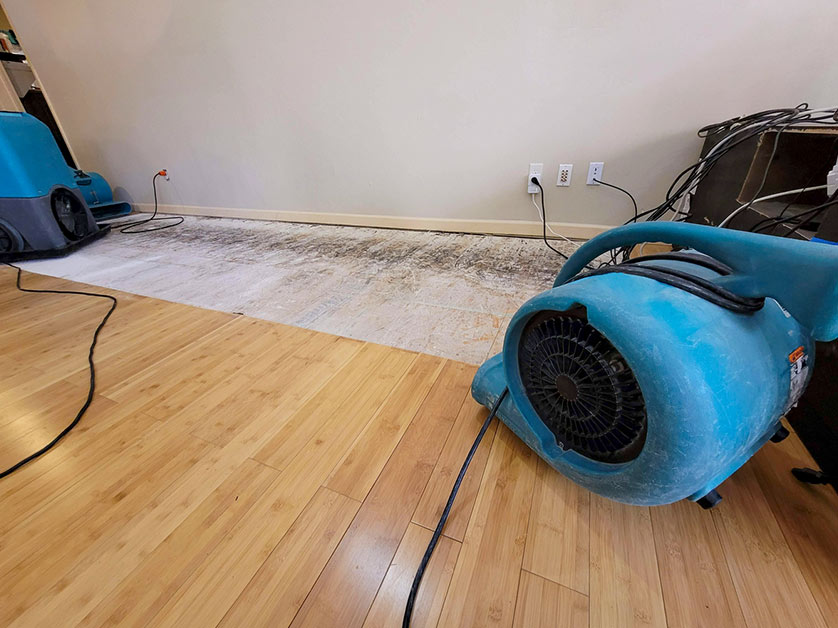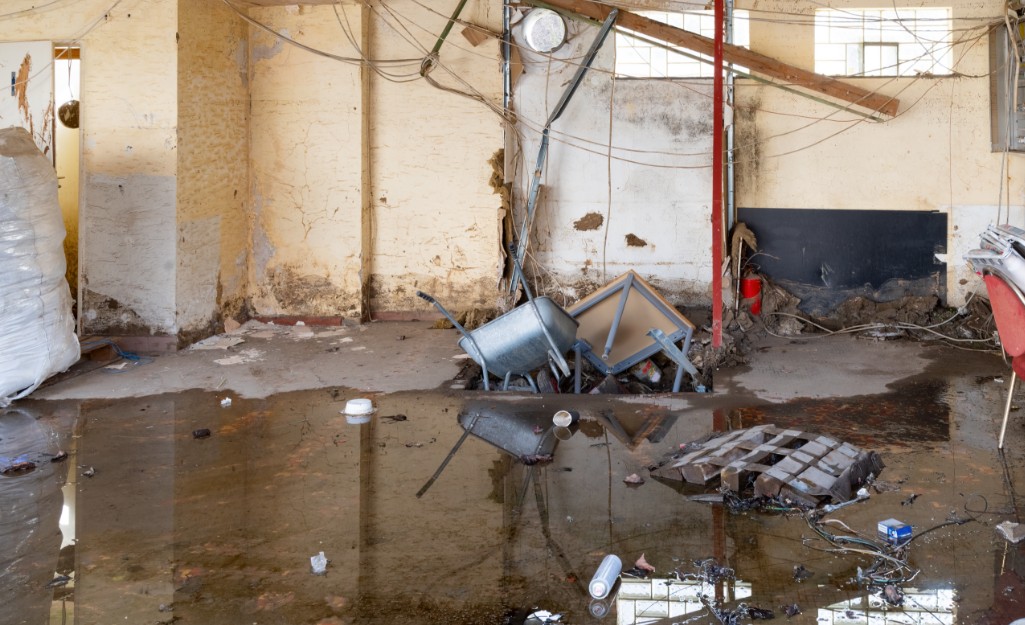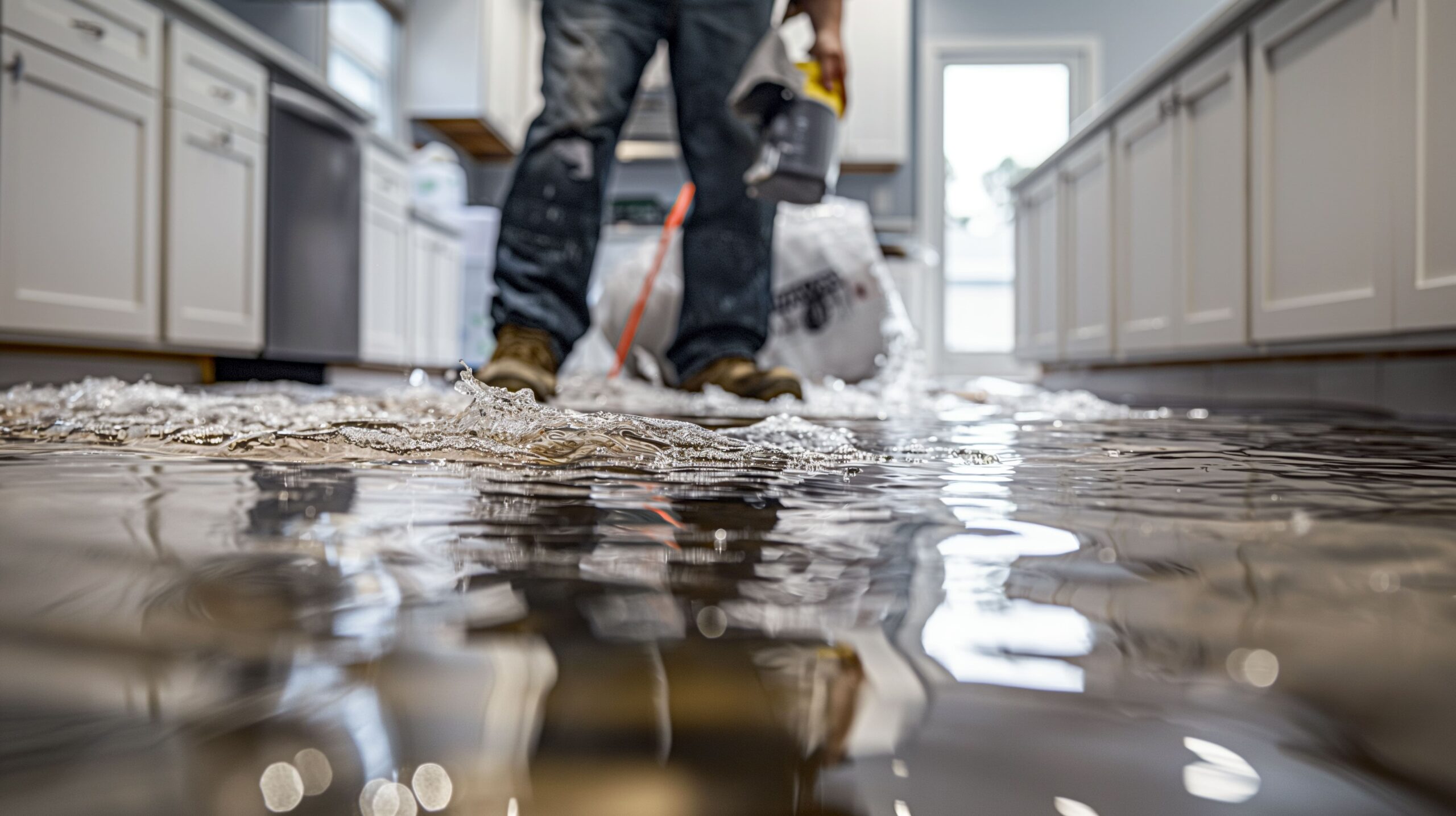Essential steps for more effective Flood Cleanup Services results
Wiki Article
Water Damage Restoration 101: Understanding the Process and Expense
Water damage can strike all of a sudden, leaving home owners in a state of confusion. Understanding the reconstruction process is necessary for efficient recuperation. From reviewing the damage to selecting the right service copyright, each action influences the general outcome and cost. Factors such as the kind of water damage and necessity also play a considerable duty. What are the particular strategies utilized in remediation, and just how can one get ready for prospective expenditures?Sorts Of Water Damage

First Evaluation and Inspection

Water Extraction Methods
Following the preliminary assessment, effective water removal strategies are used to minimize damage and protect against more problems. These techniques include using specialized devices such as completely submersible pumps and industrial-grade vacuum cleaners - Mold Remediation After Water Damage. The selection of method relies on the volume of water present and the sort of materials affected. For standing water, completely submersible pumps are generally made use of for rapid removal, while vacuum cleaners are ideal for removing water from carpetings and upholstery. Furthermore, progressed approaches like water extraction mats might be employed for hard-to-reach locations - Water Damage Restoration. The goal is to eliminate as much water as feasible, lessening the capacity for mold and mildew growth and architectural damage. Motivate and efficient water extraction is necessary in the total water damage reconstruction processDrying and Dehumidification Process
Once the water extraction is complete, the drying and dehumidification procedure becomes essential to bring back the affected location. This phase generally utilizes industrial-grade dehumidifiers and air movers to successfully lower wetness degrees. The dehumidifiers reel in wet air, eliminating excess humidity, while air moving companies distribute air to increase dissipation. Surveillance devices is usually utilized to track moisture and temperature levels, making sure optimal drying problems. The duration of this procedure can differ relying on the level of the water damage and environmental variables. It is essential to thoroughly dry all affected products, including wall surfaces, flooring, and furnishings, to protect against mold development and architectural damage. Proper implementation of this action is essential for an effective remediation result.Cleaning Up and Sanitizing Affected Areas
A thorough preliminary assessment and inspection of impacted areas is crucial to determine contamination degrees once the drying process is total. Water Damage Restoration. Effective cleaning methods and suitable items must after that be employed to get rid of debris and stains. Sanitization and disinfection methods are necessary to guarantee that harmful pathogens are eliminated, restoring the space to a risk-free condition.First Assessment and Inspection
Prior to beginning any reconstruction efforts, an extensive preliminary evaluation and evaluation of the impacted locations are essential for efficient cleaning and sterilizing. This procedure includes recognizing the degree of water damage, determining the resource of the water intrusion, and evaluating the materials affected. Assessors commonly seek indications of mold growth, architectural integrity issues, and harmed belongings. The assessment additionally includes checking dampness degrees using specialized tools to assure no surprise water pockets stay, as these can cause more complications. Documenting the searchings for is necessary for preparing the following actions in the restoration procedure. An in-depth initial assessment makes it possible for restoration experts to devise a targeted method for efficient cleaning and sterilizing, eventually reducing damage and health risks.Cleansing Strategies and Products
Effective cleansing and sterilizing of water-damaged locations require a variety of strategies and products customized to the certain products affected. For porous surfaces like drywall and carpets, removal techniques are important to get rid of excess dampness, followed by deep cleaning with specialized detergents. Non-porous materials such as floor tile or metal can be cleansed making use of commercial-grade cleaners that efficiently eliminate pollutants. Steam cleaning is an additional reliable technique, particularly for rugs and upholstery, as it utilizes high temperature levels to get rid of bacteria and mold and mildew (Water Damage Restoration). Furthermore, eco-friendly products are progressively preferred for their safety and security and efficacy - Water Damage Restoration. Inevitably, selecting the suitable cleansing techniques and items not only guarantees instant tidiness however likewise help in preventing more damage and wellness risks connected with water invasionSanitization and Disinfection Techniques
When dealing with water damage, appropriate sanitization and disinfection techniques are important to ensure the safety and health and wellness of the afflicted atmosphere. After first cleaning, surfaces need to be treated with proper anti-bacterials to remove pathogens, mold and mildew, and microorganisms that grow in moist problems. Usual methods consist of using EPA-approved chemical anti-bacterials, which can be used through splashing or wiping strategies. In addition, ultraviolet (UV) light systems can effectively disinfect areas by reducing the effects of microorganisms without severe chemicals. The choice of method commonly depends upon the kind of products affected and the extent of contamination. Inevitably, detailed sanitization not just brings back a secure living space but likewise helps prevent future health threats related to lingering wetness and mold growth.
Fixings and Restoration Options
Reviewing the damage brought on by water direct exposure is crucial for identifying the appropriate repairs and restoration choices. Homeowners may deal with numerous issues, including harmed drywall, deformed floor covering, and jeopardized architectural elements. Relying on the level of the damage, repair services may include changing areas of drywall, mounting new flooring, or strengthening architectural beams. In instances of serious damage, complete substitute of affected products may be required. Furthermore, professional conservators frequently recommend using wetness meters to assess hidden Water Damage Restoration wetness levels prior to picking the very best strategy. It is essential to act without delay to prevent mold development and additional degeneration. Picking the right alternatives not only restores the residential or commercial property but also assures long-term security and functionality.Variables Affecting Restoration Costs

The level of water damage directly impacts the reconstruction sets you back property owners can anticipate to incur. Factors such as the source of the water, the period of exposure, and the affected materials substantially affect rates. For instance, tidy water damage from a damaged pipeline is normally less pricey to bring back compared to damage triggered by sewage. Additionally, the level of contamination dictates the demand for specialized cleaning and disposal services, further raising expenditures. Geographical location likewise contributes, as local labor prices and accessibility of reconstruction services can vary. Finally, the urgency of the action affects costs; quicker treatments typically result in lower general costs by stopping additional damage. Recognizing these aspects is vital for house owners when estimating reconstruction expenses.
The three key types of water damage are categorized based on contamination degrees: tidy water, gray water, and black water. A complete first evaluation and inspection are crucial actions in the water damage remediation procedure. For standing water, completely submersible pumps are normally made use of for quick elimination, while vacuums are excellent for extracting water from carpets and upholstery. The level of water damage directly impacts the remediation sets you back home owners can expect to sustain. Clean water damage from a busted pipe is typically much less costly to recover contrasted to damage caused by sewer.
Report this wiki page